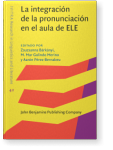Chapter 13
Using technology to facilitate the integration of pronunciation into the classroom
This chapter explores the potential of technology to facilitate the teaching and learning of
pronunciation, with special emphasis on how technology can enhance the integration of pronunciation into the language
classroom. First, the chapter discusses the role of technology in pronunciation instruction. Next, it offers an
overview of the field of computer assisted pronunciation training (CAPT), presenting the tools and techniques
available as well as relevant research findings and pedagogical implications. The chapter covers a range of techniques
traditionally adopted in the field of CAPT, and also more recent uses of technology that hold great potential for
pronunciation practice. Finally, it puts forward recommendations on how to facilitate Spanish pronunciation
instruction with technology and it offers directions for future research and practice.
Article outline
- 1.The role of technology in pronunciation teaching and learning
- 2.Enhancing pronunciation instruction with technology: Insights from the field of CAPT
- 3.Using technology to facilitate the integration of pronunciation instruction
- 3.1Introductory activities and explicit instruction
- 3.2Listening and perception practice
- 3.3Listening and production practice
- 3.4Reading and pronunciation
- 3.5Speaking and pronunciation
- 4.Conclusions and directions for future research and practice
-
Note
-
References
This content is being prepared for publication; it may be subject to changes.
